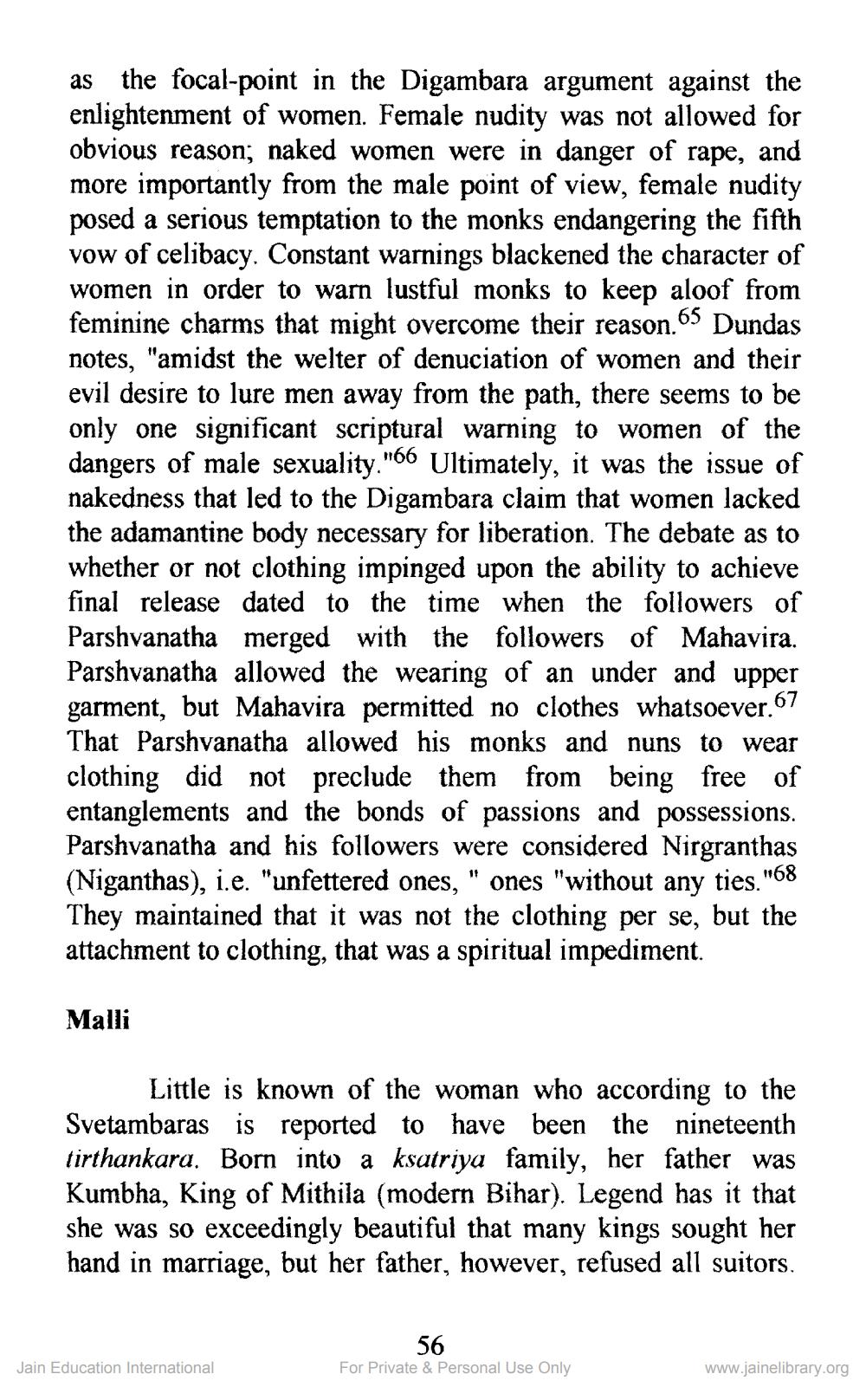________________
the focal-point in the Digambara argument against the enlightenment of women. Female nudity was not allowed for obvious reason; naked women were in danger of rape, and more importantly from the male point of view, female nudity posed a serious temptation to the monks endangering the fifth vow of celibacy. Constant warnings blackened the character of women in order to warn lustful monks to keep aloof from feminine charms that might overcome their reason. 65 Dundas notes, "amidst the welter of denuciation of women and their evil desire to lure men away from the path, there seems to be only one significant scriptural warning to women of the dangers of male sexuality."66 Ultimately, it was the issue of nakedness that led to the Digambara claim that women lacked the adamantine body necessary for liberation. The debate as to whether or not clothing impinged upon the ability to achieve final release dated to the time when the followers of Parshvanatha merged with the followers of Mahavira. Parshvanatha allowed the wearing of an under and upper garment, but Mahavira permitted no clothes whatsoever.67 That Parshvanatha allowed his monks and nuns to wear clothing did not preclude them from being free of entanglements and the bonds of passions and possessions. Parshvanatha and his followers were considered Nirgranthas (Niganthas), i.e. "unfettered ones, ones "without any ties."68 They maintained that it was not the clothing per se, but the attachment to clothing, that was a spiritual impediment.
11
as
Malli
Little is known of the woman who according to the Svetambaras is reported to have been the nineteenth tirthankara. Born into a ksatriya family, her father was Kumbha, King of Mithila (modern Bihar). Legend has it that she was so exceedingly beautiful that many kings sought her hand in marriage, but her father, however, refused all suitors.
Jain Education International
56
For Private & Personal Use Only
www.jainelibrary.org




